The New York Law Journal by Noeleen G. Walder - March 15, 2010
In rejecting the bulk of New York's content-based restrictions on attorney advertising, the U.S. Court of Appeals for the Second Circuit held Friday that a ban on the use of nicknames like "Heavy Hitters" or client testimonials about pending cases violates the First Amendment.
The circuit also held that preventing lawyers from employing special effects or portraying a judge in an ad did not "materially advance" the state's interest in prohibiting misleading speech. "The speech that Defendants' content-based restrictions seeks to regulate—that which is irrelevant, unverifiable, and non-informational—is not inherently false, deceptive, or misleading. Defendants' own press release described its proposed rules as protecting consumers against 'potentially misleading ads,'" the panel wrote in Alexander v. Cahill, 07-3677-cv, 07-3900-cv. The ruling primarily affirms the July 2007 decision by Northern District Judge Frederick J. Scullin. The appellate panel disagreed with Judge Scullin in finding that one provision of the rules, which bars ads from portraying a "fictitious law firm" or "the use of a fictitious name to refer to lawyers not associated together in a law firm" was "actually misleading" and not entitled to First Amendment protection. The panel also upheld a portion of the rules requiring attorneys to wait 30 days after accidents before targeting advertising to solicit personal injury clients. The rules, which went into effect on Feb. 1, 2007, and are codified in New York's Code of Professional Responsibility at 22 NYCRR §1200, were adopted by the four state Appellate Divisions and challenged by Alexander & Catalano, a Syracuse-based personal injury firm, the firm's managing partner, James Alexander, as well as Public Citizen Litigation Group. The circuit opinion was written by Judge Guido Calabresi and joined by Judge John M. Walker Jr. Judge Sonia Sotomayor was the third member on the panel before being elevated to the U.S. Supreme Court last year.
Gregory A. Beck of Public Citizen, the lead attorney for the plaintiffs, said the rules restrict basic, advertising techniques that people see on television all the time, which are "harmless to consumers." And while the state contended the rules make lawyers look dignified, they actually have the effect of making attorney ads look "antiquated and strange," Mr. Beck said in an interview. According to David G. Keyko of Pillsbury Winthrop Shaw Pittman, who served as the lead attorney for the New York City Bar, which submitted an amicus brief supporting the plaintiffs, the ruling does not change the status quo, since an injunction prohibiting the state from enforcing the rules remained in effect. But, he said, the decision "assures everyone that the rules will not spring back into place." Public Citizen, a Washington, D.C.-based group founded by Ralph Nader, and Alexander & Catalano first challenged the rules in February 2007. Prior to their adoption, Alexander & Catalano had not only dubbed itself "heavy hitters," but ran ads depicting partners as giants towering over buildings and counseling space aliens. The law firm of James L. Alexander, and Peter Catalano challenged the 2007 regulations. One commercial showed a judge in a courtroom, who was there to "make sure [the trial] is fair." Another used wisps of smoke and blue electrical currents to highlight the firm's name. While the new rules were less restrictive than a draft version introduced in 2006, Alexander & Catalano and Mr. Beck nonetheless maintained the "cumulative effect" of the regulations was to "prohibit a wide range of potentially interesting" advertising, relied on by consumers "of moderates means."
The circuit also held that preventing lawyers from employing special effects or portraying a judge in an ad did not "materially advance" the state's interest in prohibiting misleading speech. "The speech that Defendants' content-based restrictions seeks to regulate—that which is irrelevant, unverifiable, and non-informational—is not inherently false, deceptive, or misleading. Defendants' own press release described its proposed rules as protecting consumers against 'potentially misleading ads,'" the panel wrote in Alexander v. Cahill, 07-3677-cv, 07-3900-cv. The ruling primarily affirms the July 2007 decision by Northern District Judge Frederick J. Scullin. The appellate panel disagreed with Judge Scullin in finding that one provision of the rules, which bars ads from portraying a "fictitious law firm" or "the use of a fictitious name to refer to lawyers not associated together in a law firm" was "actually misleading" and not entitled to First Amendment protection. The panel also upheld a portion of the rules requiring attorneys to wait 30 days after accidents before targeting advertising to solicit personal injury clients. The rules, which went into effect on Feb. 1, 2007, and are codified in New York's Code of Professional Responsibility at 22 NYCRR §1200, were adopted by the four state Appellate Divisions and challenged by Alexander & Catalano, a Syracuse-based personal injury firm, the firm's managing partner, James Alexander, as well as Public Citizen Litigation Group. The circuit opinion was written by Judge Guido Calabresi and joined by Judge John M. Walker Jr. Judge Sonia Sotomayor was the third member on the panel before being elevated to the U.S. Supreme Court last year.
Gregory A. Beck of Public Citizen, the lead attorney for the plaintiffs, said the rules restrict basic, advertising techniques that people see on television all the time, which are "harmless to consumers." And while the state contended the rules make lawyers look dignified, they actually have the effect of making attorney ads look "antiquated and strange," Mr. Beck said in an interview. According to David G. Keyko of Pillsbury Winthrop Shaw Pittman, who served as the lead attorney for the New York City Bar, which submitted an amicus brief supporting the plaintiffs, the ruling does not change the status quo, since an injunction prohibiting the state from enforcing the rules remained in effect. But, he said, the decision "assures everyone that the rules will not spring back into place." Public Citizen, a Washington, D.C.-based group founded by Ralph Nader, and Alexander & Catalano first challenged the rules in February 2007. Prior to their adoption, Alexander & Catalano had not only dubbed itself "heavy hitters," but ran ads depicting partners as giants towering over buildings and counseling space aliens. The law firm of James L. Alexander, and Peter Catalano challenged the 2007 regulations. One commercial showed a judge in a courtroom, who was there to "make sure [the trial] is fair." Another used wisps of smoke and blue electrical currents to highlight the firm's name. While the new rules were less restrictive than a draft version introduced in 2006, Alexander & Catalano and Mr. Beck nonetheless maintained the "cumulative effect" of the regulations was to "prohibit a wide range of potentially interesting" advertising, relied on by consumers "of moderates means."
The ads had "no potential to confuse or deceive consumers," the plaintiffs argued in their complaint, which named Thomas J. Cahill, former chief counsel for the Department Disciplinary Committee for the Appellate Division, First Department, as a defendant (NYLJ, April 16, 2007). The suit was also filed against other members of the disciplinary committee responsible for enforcing the Code of Professional Responsibility. On July 20, 2007, Judge Scullin threw out the content-based restrictions after finding the state failed to show that the categorical bans directly advanced their interest in barring misleading speech. However, the judge upheld the 30-day moratorium on soliciting clients in personal injury or wrongful death cases. On appeal, Assistant Solicitor General Owen Demuth urged the circuit panel to reverse the decision on content-based regulations, which Mr. Demuth said prohibited the use of "unverifiable, non-informational or otherwise irrelevant information" and should not be afforded First Amendment protection. The circuit disagreed with respect to most of the content-based restrictions. Relying on the test articulated in the U.S. Supreme Court's 1980 holding in Central Hudson Gas & Electric Corp. v. NYS Public Service Commission, 447 U.S. 557, the circuit found that all of the restrictions, except for the provision prohibiting the use of fictitious firms, failed to materially advance the state's interest in protecting the legal profession's image and barring inherently or actually misleading commercial speech. While some client testimonials suggest that past performance is indicative of future performance, "not all testimonials will do so, especially if they include a disclaimer," Judge Calabresi wrote. The panel also held that the defendants failed to demonstrate that the wholesale ban on ads portraying a judge, employing monikers like Heavy Hitters, and the use of attention grabbing techniques that were not relevant to selection of counsel were "inherently or actually misleading in all cases." However, the panel held that the ban on using fictitious names such as the Dream Team to "give the misleading impression" attorneys belong to the same firm is constitutional. According to the decision, the plaintiffs acknowledged at oral argument that they were not challenging this regulation. Turning to the 30-day moratorium, the circuit cited the U.S. Supreme Court ruling in Florida Bar v. Went for It, 515 U.S. 618, which upheld a rule banning direct-mail solicitations. The harms "are just as compelling with respect to targeted attorney advertisements on television, radio, newspapers, and the Internet as they are in justifying a ban on targeted mailings of attorney advertisements," Judge Calabresi concluded. Jeffrey A. Udell, chair of the New York City Bar's Professional Responsibility Committee, said in an interview that he was pleased the court struck the most overbroad and unreasonable provisions of the rules. However, Mr. Udell, a partner at Olshan Grundman Frome Rosenzweig & Wolosky, said he disagreed with the decision to uphold the 30-day moratorium, which he said unfairly place accident victims at a disadvantage. A spokesman for the state attorney general said the office is reviewing the decision. The New York State Bar Association and Arent Fox submitted an amicus brief supporting the 30-day moratorium. Bernice K. Leber, former president of the state bar, which argued before the Second Circuit in favor of the cooling-off period, said Friday's ruling affirms the sensitivity that the members of the bar must show to accident victims and their families. Ms. Leber, a partner at Arent Fox, cited a series of air crashes and the Staten Island Ferry accident as having highlighted the need for a moratorium on how long lawyers must wait before retaining clients. Noeleen G. Walder can be reached at nwalder@alm.com. Joel Stashenko contributed to this report.





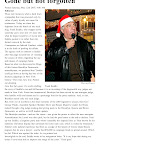

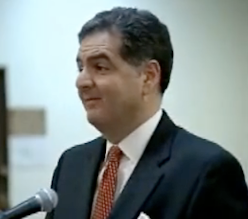
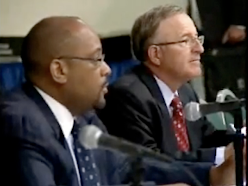
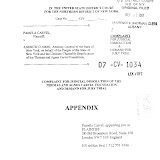

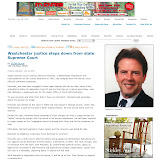
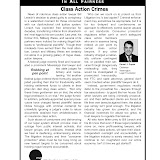

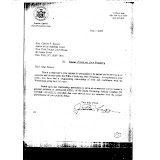
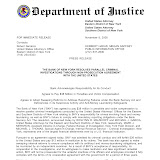
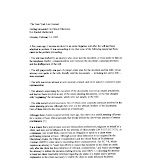
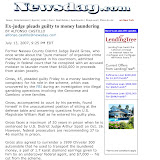
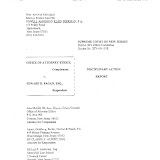
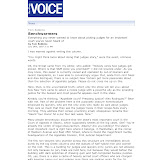
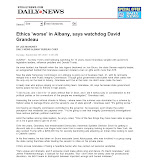
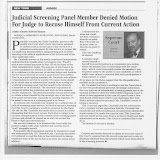



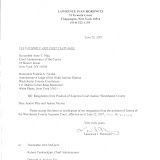
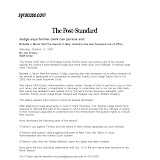
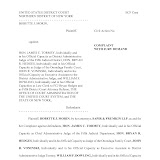

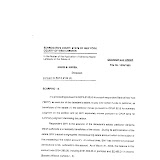
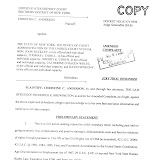
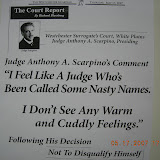
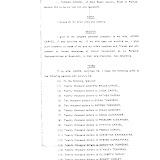
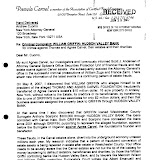
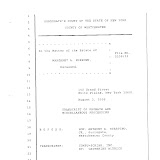
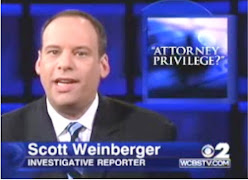
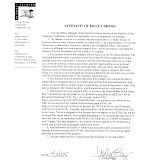
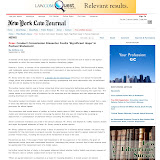
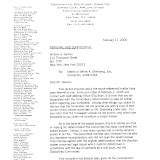
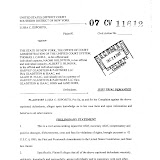
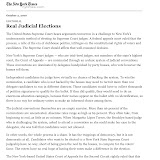
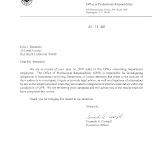
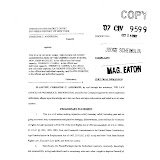
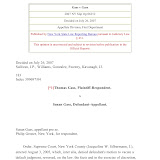
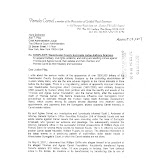
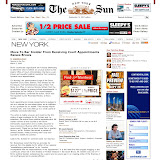
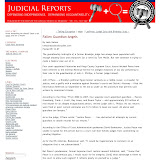
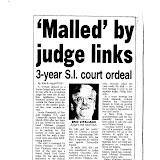
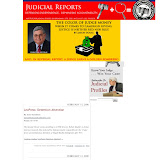
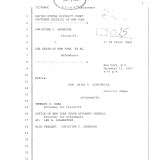
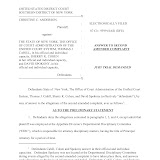
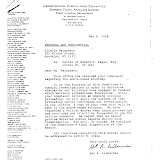
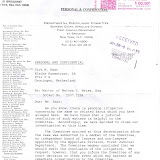
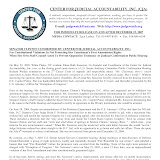


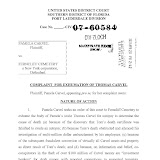
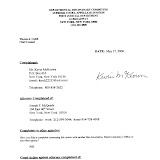
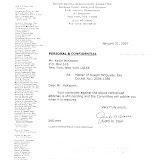
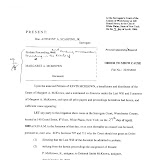
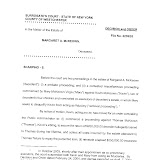
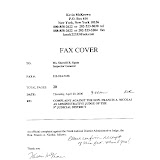

6 comments:
100-1... to anyone.... Tom Cahill is drunk as I write this.
DDC'S, Naomi Goldstein was named the "CLEANER" and the Second Circuit Court Players are being called the HEAVY HITTERS, what a match made in HEAVEN!!!!
I'm sure my case (08-4879-cv) as well as ALL the other cases were thrown to the "HEAVY HITTERS" at the Second Circuit Court of Appeals!!!
One commercial showed a judge in a courtroom, who was there to "make sure [the trial] is fixed."
FOR ENTERTAINMENT PURPOSES ONLY
COURTESY OF THE NEW YORK STATE COURT SYSTEM!
Too funny, so is Bernadette E. Lupinetti, Esq. is going to be disbar and arrested for misrepresenting herself and abusing children and families?? or is the AG's Office is going to cover up for her crimes?
It is not the Second Circuit, it's the Second Circus. Nationally known as Second to none in corruption.
Finally, truth in advertising wins out in NY.
Our Law Firm has the most connections and makes the largest payoffs to NY judges. All cases are never decided on the merits, but rather on the connections and payoffs, our specialty. Remember, we make the biggest payoffs. We welcome you in our offices, if you are ready to generously reward us and our judge friends to fix your case.
Post a Comment